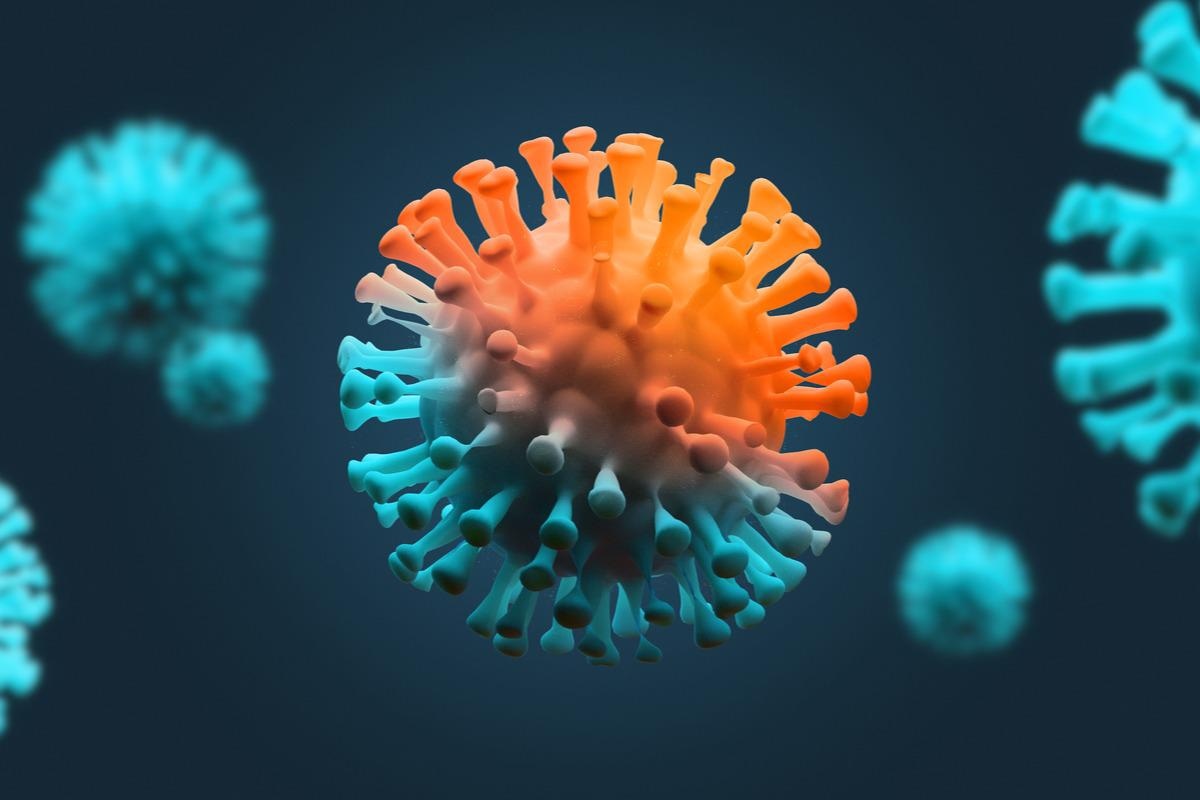In a recent study published in Anaesthesia Critical Care & Pain Medicine researchers provided an overview of the use of mathematical modeling to determine severe acute respiratory syndrome coronavirus 2 (SARS-CoV-2) kinetics. They applied the viral dynamics model to assess viral infectivity. Additionally, they evaluated coronavirus disease (COVID-19) progression and predicted pharmacotherapeutic efficacy using the model.

The model incorporated biological information and mathematical approaches for the characterization of virological and immunological COVID-19 markers. It segmented human bodies into multiple sections comprising several cells or viral types. The free viral particles infected target cells that were lost to viral cytopathic effects (CPE) or/and immune responses. A “within-host” reproductive ratio (R0) was used to quantify the infected cells arising from an infected cell. At an R0>1, exponential viral growth was observed. After depleting the majority of the target cells, the virus declined rapidly at similar rates of target cell loss.
The models used the R0 values along with biological data on the cellular life cycle, adaptive and innate immune responses, and genetic mutations to determine the factors associated with SARS-CoV-2 pathogenesis, virulence, and transmission. Additionally, information on several pharmacological therapies was introduced into the model to review their efficacy against several infectious diseases.
The model characterized the effects of viral loads for assessing SARS-CoV-2 clinical evolution and transmission. The peak viral loads generated R0 values close to 10 in the model that coincided with the symptomatic onset of the Omicron variant dominant COVID-19. This indicated that immense viral shedding took place before COVID-19 symptom onset, which underscored the concern of pre-symptomatic infections.
Evaluating antivirals
Repurposed antiviral drugs such as hydroxychloroquine, remdesivir, favipiravir and lopinavir were evaluated using the model. Their half-maximal effective concentration (EC50) values were derived. According to the intra-host herd immunity cut-off value, an antiviral therapy exceeding 1/R0 (or 90%) would be effective in significantly reducing SARS-CoV-2 replication. Based on the model analysis, the medications used were not likely to attain the pharmacological targets. In contrast, the macaque analytical COVA1-18 model indicated greater than 95% efficacy of monoclonal antibodies (mAbs) in inhibiting novel respiratory infections based on Phase 3 trial results. Thus, although mathematical models assessed the efficacy of several pharmacological agents, the efficacy of many mAbs in late COVID-19 was yet to be evaluated. Nevertheless, the viral dynamics model could guide the development of optimized therapeutic measures.
The study on hospitalized French COVID-19 patients demonstrated that SARS-CoV-2 dynamics post-hospital admission differed from those post-infection. They must be independently assessed for their effects on COVID-19 mortality. Effective antiviral therapies could reduce viral clearance time by an average of two days. As predicted by the model, a ~25% decrease could be achieved in mortality among high-risk individuals aged above 65 years. This prediction was supported by the Recovery clinical trial. Thus, mathematical modeling could be used to predict COVID-19 severity.
REGN-COV analysis demonstrated a 30% decline in mortality among COVID-19 patients, who were seronegative on inclusion. This finding established the humoral REGN-COV antibody as a prognostic marker that significantly correlated with viral loads. The viral dynamic models could be used to evaluate innate and adaptive immune responses against COVID-19 on the basis of data on the viral loads and antibody titers. Moreover, parameters such as bimodal viral loads were evaluated by the model to assess the dynamic patterns of SARS-CoV-2 infection, after the emergence of several SARS-CoV-2-associated variants of concern (VoC).
Limitations of the model
The mathematical modeling approach has a few limitations. The assessments in the model are based on the data inserted, and frequent collection of immunological data and viral loads is difficult. Inadequate information of the associated parameters could lead to uncertain results.
Nevertheless, data on several immunological markers could be integrated into the model for the elucidation of the cytokine-associated inflammation responsible for the clinical presentation of COVID-19. For example, CD177 could be used to assess COVID-19 progression and hospitalization outcomes.
With the help of mathematical modeling, protective humoral responses by binding and neutralization antibodies against COVID-19 could be assessed. Moreover, the model-enabled quantification of the antibody neutralizing effects has been considered a correlate of protection (CoP). This CoP could be integrated with updated COVID-19 information and patient vaccination details to assess the protection conferred by vaccinations.









 Add Category
Add Category

